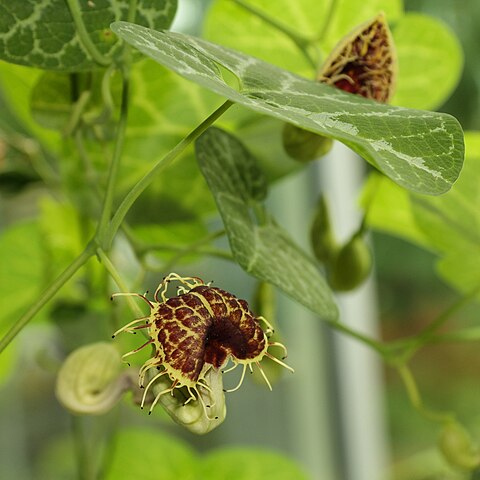The whole family went on a little reconnaissance trip to a local nursery to look at some shrubs and trees that we might use when we relandscape our front yard. With a three year old and a five year old we're in a perpetual mode of one of us watching the kids while the other is trying to do something productive, at least until their antics require both of us to bring the universe back into order. When it was my turn to watch the kiddos I followed them into a long, nearly empty hoop house where they decided to pick up the tiny gravel from the ground and start throwing it out over the empty mesh tables. I stifled my persistent desire to ask them to stop and just asked that they not throw rocks at each other or at plants.
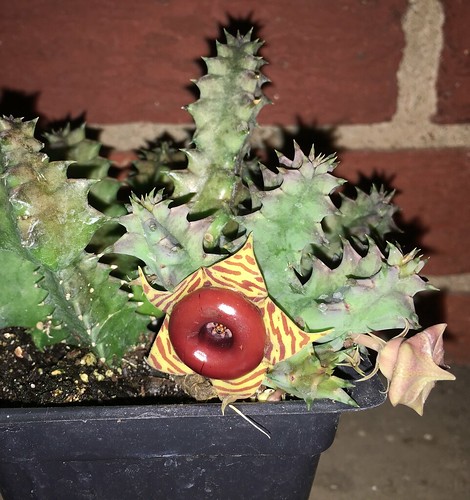 |
| Huernia zebrina |
While they continued their onslaught of gravel flinging I wandered over to the only little patch of green in the hoop house. It was a selection of small succulent plants with a sign that read "Priced as marked." I looked around and was surprised to see about 8 little pots of Huernia zebrina, a Stapeliad that I have admired photos of for a white, but had not seen in person and had not yet added to my collection. Price tag? Nope. Huh...
 |
| Huernia zebrina |
I picked out the best one of the lot, which was a tough choice, because they were all blooming, but some had more buds than others and some had more plant growth. I selected the one with the most stems and buds I could find, not focusing as much on the current number of flowers. The flowers are strange little things with a bright red ring that resembles an inner tube and leads to the common name of "Lifesaver plant."
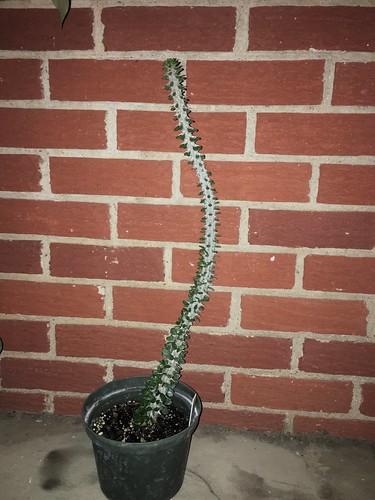 |
| Alluaudia |
Then I looked at what else was on the table. An Alluaudia? Can it be!?! There were four of them - long, lanky succulent with alternating rows of spines and leaves. I have admired a giant Alluaudia at the Myriad Gardens for years. I've never once seen one for sale. I looked at the four available and picked the best. This plant was considerably bigger than the Huernia but since I had not seen it for sale before I set a maximum price of $12 in my head. I'm not sure which species this is, but I am thinking it is probably Alluaudia procera.
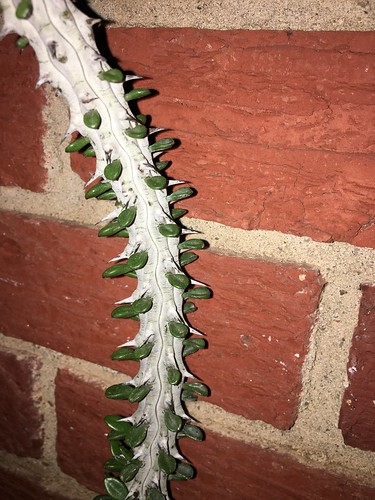 |
| Alluaudia |
I looked a bit more. Nothing significant that I had been wanting, but there was a cute little plant with very strange leaves. This was the only plant with a price tag ($3) and also the only one with a real label in it. It read "Pink Ice Plant (Oscularia deltoides)." I picked out the best one and proceeded to the cash register, hoping for the best with my unmarked plants. I figured having one plant with a $3 price tag may help with the others.
 |
| Pink Ice Plant - Oscularia deltoides |
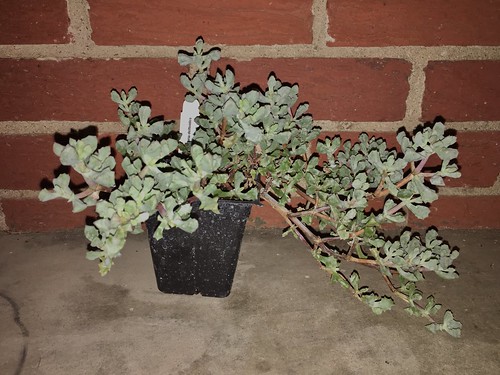 |
| Pink Ice Plant - Oscularia deltoides |
I was pleasantly surprised when the cashier decided my three plants were $2, $3, and $4. Definitely one of my cheapest plant hauls ever!


